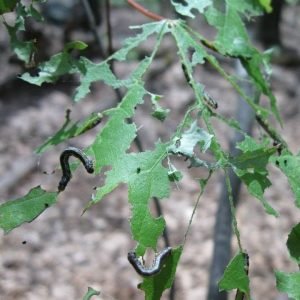
In the natural world, these symbiotic relationships can take many forms. Some insects might help wolf worms by providing them shelter, while the worms, in turn, offer something beneficial in return. It’s a dance of survival, cooperation, and sometimes, just pure necessity. Let’s dig into this exciting topic and see what makes wolf worms and their insect pals so intriguing.
What Are Wolf Worms?
Wolf worms aren’t your average worms. In fact, they’re a type of larvae that can usually be found in the wild, often nestled within the bodies of other animals, particularly mammals. This might sound a bit gruesome, but it’s all part of their life cycle. These larvae are the young form of certain parasitic flies, particularly those in the family *Cuterebridae*.
Typically, wolf worms can be found in regions with abundant wildlife, often targeting small mammals. They begin their life as eggs laid by adult flies, which then hatch into larvae. When the larvae enter a host, they start to grow and can sometimes lead to infections that can seriously affect their host’s health. It’s a prime example of how nature can be both beautiful and brutal.
What’s interesting here is how these larvae interact with their environment. They have evolved to survive in this unique way, making the relationship between them and their hosts one of the most compelling cases of parasitism in nature. The host provides a warm, nutrient-rich environment, while the worm grows and eventually matures into a fly.
The Concept of Symbiosis
Now, let’s talk about the broader concept of symbiosis, which just means “living together.” In nature, there are different types of symbiotic relationships: mutualism, commensalism, and parasitism. Wolf worms fit specifically into the parasitism category, where they benefit at the expense of their hosts.
– **Mutualism** is when both species benefit. A classic example is bees and flowers. The bees get nectar for food while helping flowers pollinate.
– **Commensalism** is when one species benefits and the other is unaffected. Think of barnacles hitching a ride on whales. The barnacles get a free ride to food, and the whale doesn’t even notice.
– **Parasitism**, which wolf worms exemplify, is where one organism benefits at the cost of another. In this case, the worm thrives while the host animal may suffer.
Understanding these relationships helps us appreciate the complexity of nature. Every organism plays a part, and these interactions keep ecosystems balanced.
How Wolf Worms Affect Their Hosts
Wolf worms can have significant effects on their host animals. When they invade, they typically settle in areas where they can grow and feed easily. While this might sound harmless, it can lead to a few serious health issues for the host:
1. **Infections:** As the larvae grow, they can cause infections that can spread through the host’s body. These infections can become fatal if not treated.
2. **Nutritional Deficits:** The presence of wolf worms can affect the host’s ability to absorb nutrients, leading to malnutrition or weakness.
3. **Behavior Changes:** Infected animals may exhibit abnormal behavior, which can affect their survival in the wild. For example, they might become less active or avoid social groups.
It’s a tough situation. The host may have been healthy and thriving prior to the infestation, only to find itself battling for survival. This dynamic reflects the harsh realities of life in the animal kingdom, where not all relationships are equal.
Interesting Symbiotic Relationships in Nature
While wolf worms may be fascinating, they’re just one example of symbiosis in nature. Let’s take a quick look at a few other intriguing relationships:
– **Cleaner Wrasse and Fish:** Cleaner wrasse fish eat parasites off larger fish. The larger fish get cleaned, while the wrasse get a meal. It’s a win-win!
– **Ants and Aphids:** Ants protect aphids from predators in exchange for the sweet honeydew the aphids secrete. This relationship highlights the mutual benefits of symbiosis.
– **Clownfish and Sea Anemones:** Clownfish live among the stinging tentacles of sea anemones for protection, while the clownfish provide nutrients to the anemones through their waste.
These examples show how symbiotic relationships vary widely. Some are beneficial for both parties, while others, like the one involving wolf worms, can lean towards less favorable outcomes for the host.
The Role of Wolf Worms in Ecosystems
Despite the challenges they pose to their hosts, wolf worms also play a role in their ecosystems. They help regulate animal populations, ensuring that certain species don’t become overly dominant. By keeping host numbers in check, these worms indirectly support a balance in their environment.
For instance, if a particular type of small mammal becomes too numerous, wolf worms and similar parasites may help control its population. This kind of population control is essential for the health of an ecosystem.
This shows us how interconnected everything is. Every creature, even those that seem like nuisances, has a place and purpose. It’s nature’s way of maintaining harmony.
Wolf worms and their relationships with insects and hosts might seem strange, but they highlight the complexities of life in the wild. While they may be parasitic and cause challenges for their hosts, they also play a crucial role in maintaining ecological balance.
By understanding these relationships better, we can appreciate the delicate dance of life that unfolds all around us. So next time you hear about a wolf worm, remember the intricate web of interactions it’s a part of. Who knew that a small creature could have such a big impact? Nature truly never fails to surprise us.
